Euro-Area Growth Revised Down Slightly Despite Germany
This article by Maria Tadeo and Piotr Skolimowski for Bloomberg may be of interest to subscribers. Here is a section:
“The headline number was slightly weaker than the estimate, but it’s a good number nonetheless,” said Marco Valli, chief euro-area economist at UniCredit Bank in Milan. “My feeling is there were some temporary factors that supported growth in the quarter, but the underlying trend is slightly softer.”
Expansion in Germany accelerated to 0.7 percent, the fastest pace in two years, beating the 0.6 percent estimate in a Bloomberg survey of economists. Italy grew 0.3 percent and the Dutch economy 0.5 percent. The Greek economy contracted 0.4 percent for the same period.
?Germany has benefited from record-low unemployment that has supported consumer demand, while European Central Bank stimulus is helping to drive a cyclical recovery in the euro area as a whole. But the divergence across the bloc highlights the challenge for the policy makers to boost uneven growth and revive an inflation rate that’s fallen below zero again. ECB President Mario Draghi has said the outlook for growth remains “tilted to the downside.”
Germany remains one of the clearest beneficiaries of the creation of the Euro not least because it was best prepared for its creation following the necessary fiscal consolidation that followed reunification. Having much of the continent accept its currency, which allowed companies to expand rapidly into less developed peripheral markets while at the same time encouraging massive credit growth in those markets led to outsized gains until the credit crisis.
Germany’s position as paymaster general for the bloc meant that while in normal circumstances many peripheral companies, banks and countries would have defaulted, that has not happened. Governments have been forced to absorb massive private sector debts so that the investments made in the periphery are paid back in full regardless of the burden that puts on consumers in those countries.
The fact Germany is a clear beneficiary of the ultralow interest rate environment and growing faster than the economies the policy is designed to help is a further testament to how much of a gap there is between the periphery and the core of the Eurozone.
.png)
The Euro is now pulling back from the upper side of its yearlong range and a sustained move above $1.15 would be required to question potential for additional downside.
It thought it might be timely to revisit the fact that while the Euro might have declined it is still strong from the perspective of many member countries.
Here are historic charts for the Italian Lira, Spanish Peseta, Portuguese Escudo, Greek Drachma and Irish Punt with the Euro replacing them from 2002.
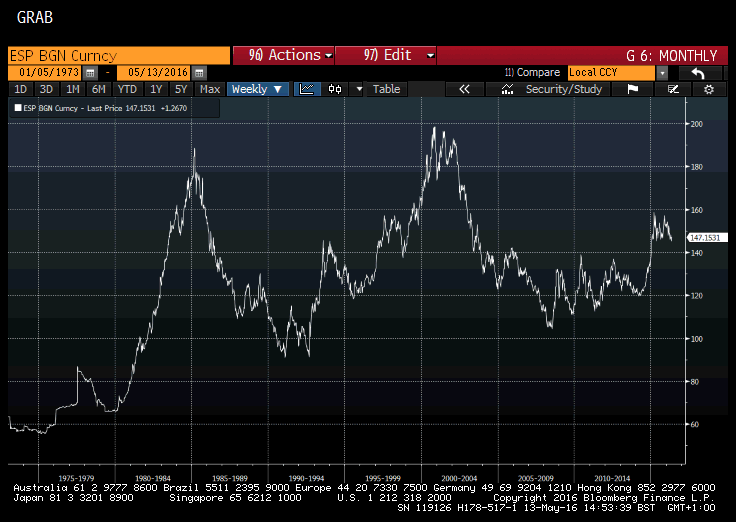
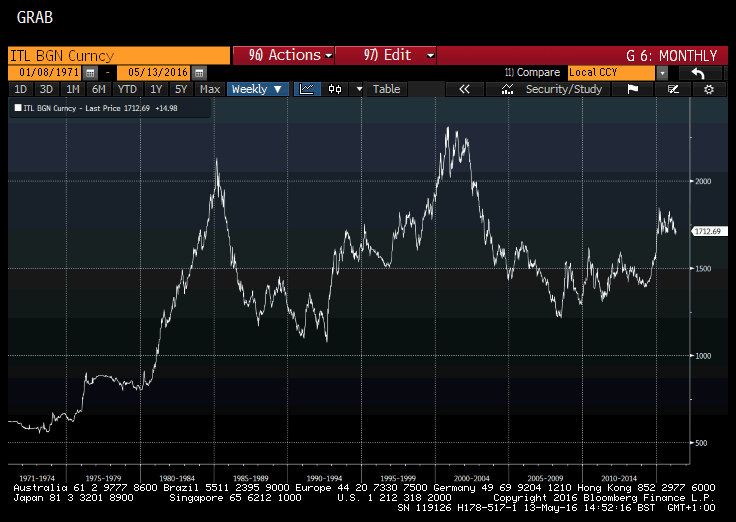
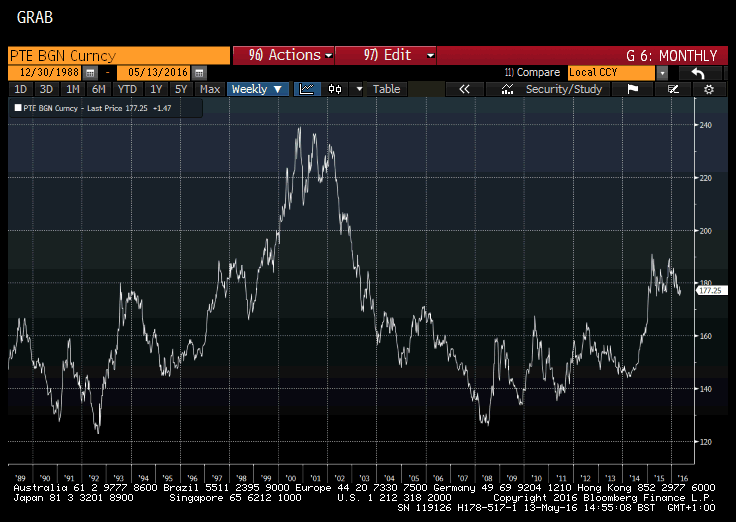
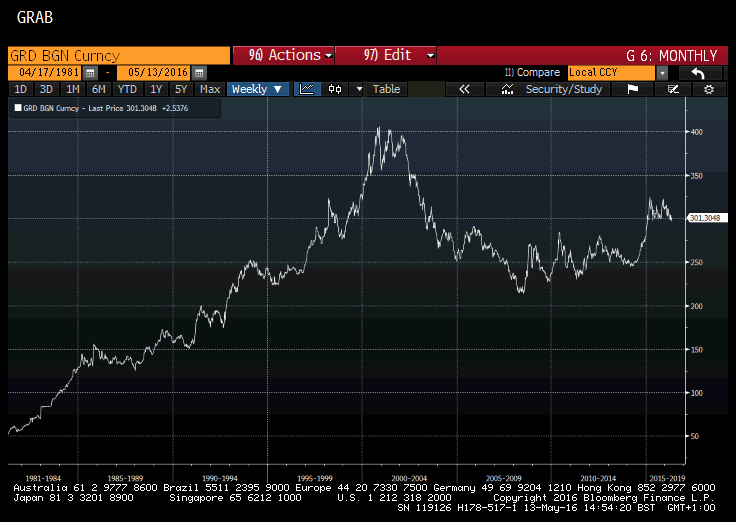
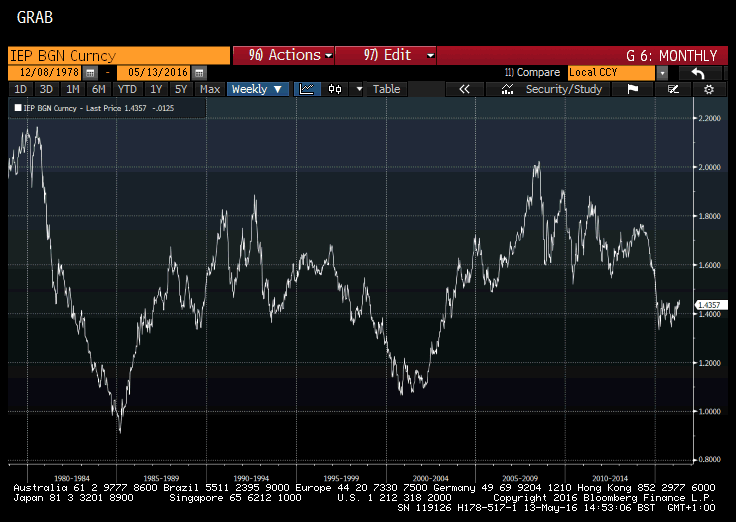
It is very clear from these charts how strong the Euro is relative to where these currencies traded before 2002.
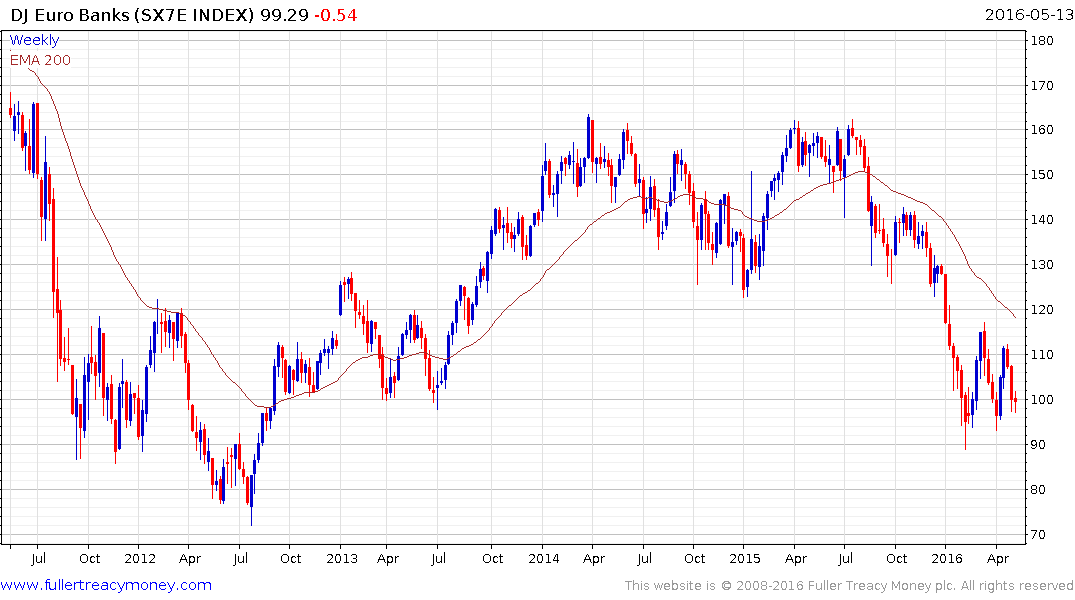
Spanish and Italian banks represent 47% of the DJ Euro Stoxx Banks Index. It should benefit from a weaker Euro, at least in nominal terms, but a sustained move above 115 will be required to confirm the three-month range represents support building.
Back to top


